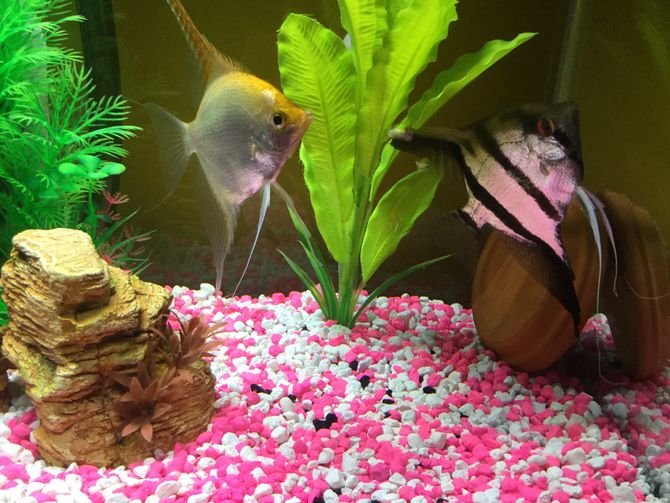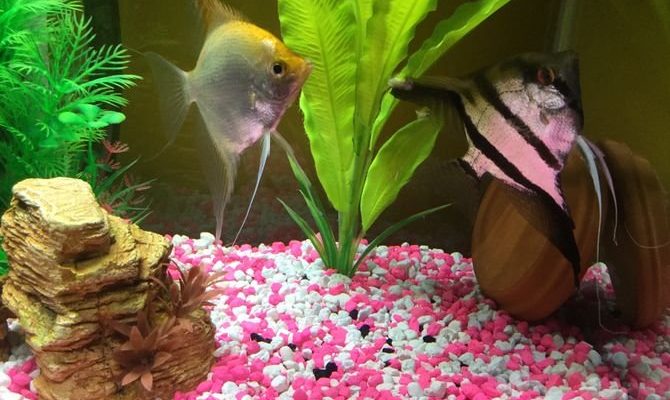
So, let’s dive into the world of angelfish reproduction. Imagine a couple getting ready to have kids—angelfish have their own “preparing” stage too. They go through a series of steps before they lay their eggs. This article will walk you through the process, making it feel as simple as enjoying your favorite coffee blend. We’ll cover everything from choosing the right pair to caring for the little ones once they arrive. Ready? Let’s get started!
Understanding Angelfish Breeding Basics
Before we kick off the details, let’s first understand what breeding angelfish really involves. Breeding is not just about putting a male and female together; it’s about creating the right environment for them. Just like how we prepare a cozy room for a newborn, angelfish need their space too.
Angelfish typically reach sexual maturity at around six months to a year old. At this age, you might notice some behavioral changes—like the male showcasing his vibrant colors or the female picking spots in the tank to lay her eggs. They often form strong pair bonds, which is essential for successful breeding. Think of it as a couple making a home together; they need to feel comfortable and safe.
What’s fascinating is that angelfish prefer laying their eggs on flat surfaces, like a clean rock or a leaf. If you’ve got live plants in the tank, they might even choose those! Providing suitable surfaces is key—think of it like setting up a nursery for them.
Choosing the Right Pair of Angelfish
Now, how do you pick the perfect pair? It’s not as simple as a fishy match.com! You’ll want to consider a few factors:
- Health: Always choose healthy fish that show vivid colors and active behavior. Sick fish won’t breed properly, and that’s a real downer.
- Compatibility: Look for a pair that gets along well. You’ll notice they might swim close together or perform little dances—this is a good sign!
- Color Variations: Some people like breeding specific color morphs, such as marble or koi angelfish. Decide if you want to keep it natural or go for unique variations.
Once you’ve selected your pair, give them a little time to settle in. It’s like moving into a new neighborhood; they need some time to adjust. Make sure they are in a well-maintained tank with clean water and the right temperature—around 78°F to 84°F is ideal for angelfish.
Creating the Perfect Breeding Environment
Alright, now that you have your pair, let’s set them up for success. Creating a breeding environment is crucial for angelfish. Here’s what you need to do:
1. Tank Size: Ideally, a breeding pair needs a tank of at least 20 gallons. This gives them enough space to swim and feel secure.
2. Water Quality: Regularly check the water parameters: pH should be between 6.5 and 7.5, and ammonia should be at 0. Regular water changes help maintain a clean environment.
3. Hiding Spots: Provide plenty of hiding places using plants, rocks, or commercial breeding cones. This will help your angelfish feel safe as they prepare to lay eggs.
Once the environment is set, you’ll likely notice your fish spending more time together. It’s like a couple preparing for a grand event—they’re getting ready to start a family!
The Breeding Process of Angelfish
Now, let’s talk about the actual breeding process. When the moment is right, the female angelfish will lay eggs—often numbering in the hundreds—on a flat surface. Here’s how it typically unfolds:
– Spawning: The female will lay her eggs and the male will follow closely behind, fertilizing them. This can happen over several days, so don’t be surprised if you see eggs appearing in different batches.
– Protective Behavior: After laying, both parents usually take turns guarding the eggs. They might chase away other fish or even nibble at the eggs to keep them safe. It’s like an amazing parental teamwork moment!
– Egg Development: In about 2-3 days, you’ll notice tiny, wriggling fry emerging from the eggs. This is the moment every angelfish breeder looks forward to!
Understanding this process is key if you want to be successful. The parents’ protective instincts are strong, and they’ll be focused on ensuring that the tiny fry are safe and healthy.
Taking Care of Angelfish Fry
Once those fry hatch, your job shifts from setting the stage to taking care of the little ones. Here’s what you need to know to nurture them:
1. Fry Food: Right after hatching, angelfish fry feed off their yolk sacs for about 48 hours. After that, you can start feeding them infusoria or crushed flakes. It’s like feeding a baby—start small and easy to digest.
2. Water Conditions: Keep the water quality high for the fry, as they’re more sensitive than adult fish. Regular water changes and monitoring pH remain important.
3. Remove Parents After a Week: After about a week, consider separating the fry from the parents. The parents might start seeing the fry as food if they’re hungry, so separation is key for survival.
Caring for fry can be both exciting and a bit stressful, but watching them grow is incredibly rewarding. You’ll see their colors begin to come out, and soon enough, they’ll be swimming around like little angelfish explorers!
Common Challenges in Angelfish Breeding
With all the beauty of breeding angelfish comes a few potential hiccups. Here are some common challenges you might face:
– Egg Fungus: If you notice a white, fuzzy coating on the eggs, that’s a sign of egg fungus. To prevent this, ensure that your tank is clean and that the eggs are fertilized properly.
– Aggressive Behavior: Sometimes, one fish might get a little too aggressive—especially if there are multiple pairs in one tank. If this happens, it might be best to separate them.
– Low Survival Rates: Not all fry will survive, especially if they’re not given the right care. Keeping the water clean and feeding them appropriately is crucial for their survival.
Facing these challenges is part of the breeding journey. Remember, patience is key, and learning from each batch of fry will only make you a better angelfish caretaker in the future.
Breeding angelfish is more than just a hobby; it’s a rewarding experience that can teach you a lot about these beautiful creatures and your own capabilities as an aquarist. You get to watch the entire life cycle unfold— from the moment those eggs are laid to watching the fry grow and thrive.
So, if you’ve been thinking about breeding angelfish, don’t hesitate! Create the right environment, choose your pair wisely, and dive into the adventure. You might find that the real beauty lies not just in their colors but in the moments you share with them as they raise their young. Happy fishkeeping!

